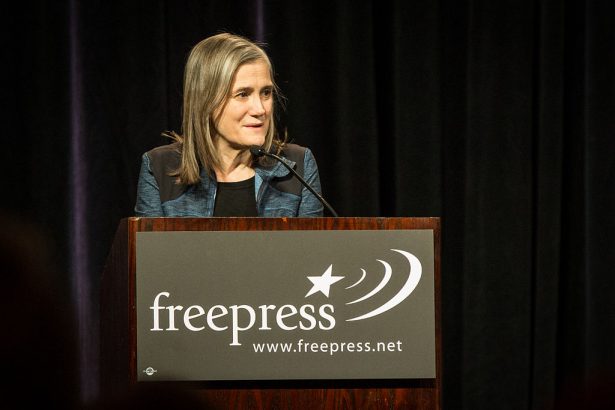
Hundreds of activists have faced arrest since nonviolent demonstrations against the North Dakota Access Pipeline, or DAPL, began last spring. While clashes with law enforcement frequently coincide with public protest, the arrests of numerous independent journalists, including Democracy Now!’s Amy Goodman, have raised serious questions about state suppression, free speech and the blurring of lines between activism and journalism.
Goodman was arrested after she posted footage of contractors using physical force and guard dogs to repel unarmed protesters at the pipeline’s construction site. Her video was shot on September 3, before the protests had received significant coverage from major news outlets, and quickly went viral. Five days later, Goodman was informed that Morton County, North Dakota had issued a warrant for her arrest, charging her with “rioting.”
Goodman is not alone among journalists targeted recently for their coverage of nonviolent protests surrounding the pipeline. On October 11, documentary filmmaker Deia Schlosberg was arrested in Walhalla, North Dakota, while covering a demonstration of solidarity with the DAPL protesters. Charged with three counts of felony conspiracy, Schlosberg was held for 48 hours without a lawyer, while law enforcement confiscated her footage. She is facing a possible sentence of up to 45 years.
Meanwhile, independent media outlet Unicorn Riot has also seen four of its journalists arrested in recent months. The publication insists that the arrests were executed with the intent of disrupting reporting, saying, “All four reporters currently facing charges were actively engaged in reporting breaking news at the time, and would have continued documenting and broadcasting if not directly prevented from doing so by their arrests.” Actor and activist Shailene Woodley was also arrested at the protests on October 10, cutting short her live broadcast, which was streaming to 40,000 Facebook users.
These arrests have raised issues about the complex relationship between activism and journalism. Ladd Erickson, while prosecuting Goodman’s case for Morton County, tried repeatedly to undermine her legitimacy as a journalist, arguing that her proximity to the action rendered her culpable. “She’s a protester, basically,” he told the Grand Forks Herald. Yet many of his comments implied a political motivation for targeting Goodman’s reporting. “Everything she reported on was from the position of justifying the protest actions,” he added. Erickson had also attempted to prosecute Goodman under an earlier charge of trespassing, but was unable to proceed due to lack of evidence.
Many others have expressed alarm that such crackdowns may inhibit independent journalism in the future. Unicorn Riot organizers say this “clear pattern of arrests and criminal charges against many independent media … effectively guarantees the media have less resources to cover ongoing historical events.” Scholsberg argues that, at the time of her arrest, she was “doing her job” — documenting events — and that criminalizing reporters for bearing witness to breaking news undercuts the vital role of independent journalism. “Journalism needs to be passionately and ethically pursued and defended if we are to remain a free democratic country,” she said.
Scholsberg’s case is ongoing, but on October 17, District Judge John Grinsteiner rejected the “riot” charge leveled against Amy Goodman. Goodman celebrated the dismissal, calling it “a great vindication of the First Amendment.” She emphasized the need for journalists to “go to where the silence is,” and urged reporters to continue covering the pipeline.
